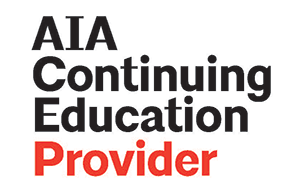 | 1 LU / HSW |
 | 1 LU / HSW |
With creative design and programming, under-utilized educational buildings from all eras can be transformed into sustainable, thriving, innovative learning environments that align with future and current needs. School planners and steering committees are tasked with creating learning environments, moving towards carbon neutrality, and repairing building that near the end of their useful lives. Transformative reuse addresses these issues. K-12 schools, colleges and universities have many outdated, underutilized facilities. Rather than replacing them, more design teams and school administrators are considering the benefit of transformative reuse that create spaces for today's learners and reduce greenhouse gas emissions. Attendees will see a wide range of recent transformative reuse projects that create learning environments for today's student, examples that can be compared compared to under-utilized buildings on the attendee's campus.
Learning Objectives:
Michael A. Nieminen, FAIA, Partner, Kliment Halsband Architects
Michael is a partner with Kliment Halsband Architects designing renovations and adaptive reuses for educational clients including UChicago; UMass Amherst, Yale University, Spence School, and Friends Seminary. Michael has developed finely tuned methodologies for evaluation of historic buildings for adaptive reuse, renovation, and addition. Michael has spoken about historic building renovation/transformation and sustainable design at AIA and SCUP Conferences. Michael is the 2021 Chair of the AIA Committee on Architecture for Education.
Jason Forney, FAIA, Principal, Brunner/Cott Architects
Jason is a Principal with Bruner/Cott Architects. He has designed buildings for Harvard, MIT, Amherst College, Lesley University, Hampshire College, and the UMaine. His work has resulted in LEED Gold and Platinum projects and net zero energy and carbon neutral designs. Jason’s work investigates links between preservation and sustainability. Jason has spoken about his work at AIA and SCUP Conferences. He co-chairs the Higher Education Subcommittee of the AIA Committee on Architecture for Education.